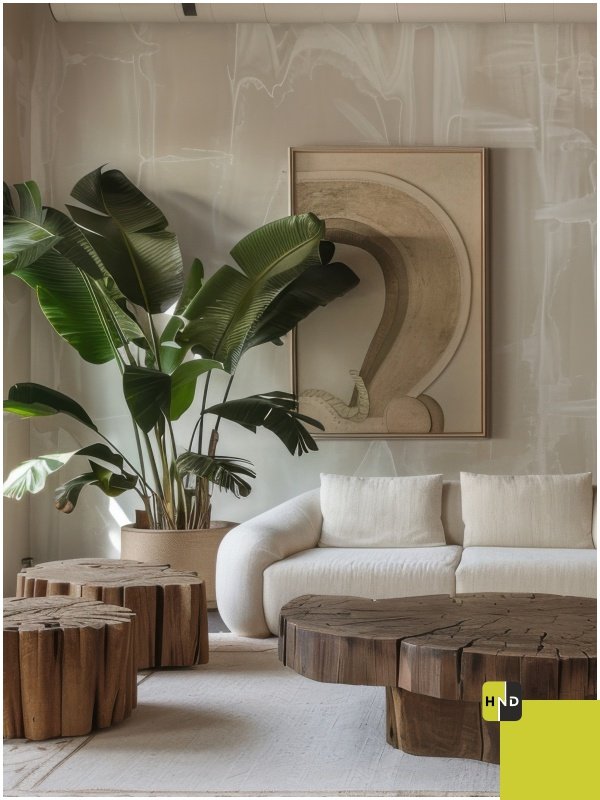Eco-Conscious Elegance
The idea of luxury in interior design is changing. Businesses and homeowners are looking for options to marry sustainability with style, as we have become more environmentally conscious. As people crave more elegant and more sustainable interiors, we’ve developed a creative solution that prioritizes ethical choices without sacrificing style. If you’re thinking about updating your home or business, sustainable luxury could be the first leap into a beautiful and environmentally friendly experience. Visually appealing opportunities are possible when making conscientious design choices while reducing their environmental impact.
Materials That Redefine Luxury
The material selection is crucial in distinguishing luxury interiors. Materials that have been the hallmark of luxury for decades, such as marble, exotic wood, and synthetic finishes, are transforming in favor of sustainable products. Reclaimed wood, bamboo, natural stone, and recycled metals are being incorporated into luxury interiors while maintaining durability and timelessness.
Natural textiles such as organic cotton, linen, and responsibly sourced wool have supplanted synthetics. Natural textiles are praised for their ability to provide texture and comfort to interior spaces, as well as improved indoor air quality. The continued shift towards sustainable materials signifies a shift towards sustainable purchasing and consumption among interior designers.
Energy-Efficient Spaces
The main requirement for sustainable luxury is energy efficiency. Modern residents can enjoy automated lighting systems together with thermal control devices that normally function with standard solar power capabilities in their households.
Building temperature control benefits from decisions about how windows and reflecting surfaces face and from how ventilation and daylight entry systems are positioned. Better comfort conditions in the residence minimize the requirement for artificial climate control systems.
Craftsmanship and Ethical Production
Contemporary luxury interiors factor in custom-made handiwork signatures that reflect craft skill and ethical production. The place of mass-produced furniture and decor items has been taken over with custom-made pieces sourced from skillful craftspeople. As such, traditional artistry is being encouraged to flourish with a low carbon footprint, associated with large-scale manufacturing. Choosing products that are crafted with love rather than mass-produced alternatives allows responsible consumption and preserves cultural heritage.
Water Conservation in Design
Water-efficient designs are gaining prominence in the sustainable luxury segment. Bathrooms and kitchens are adopting fixtures that conserve water, such as low-flow faucets, dual-flush toilets, and water-recycling systems. These technologies are not at the expense of functionality and comfort but also promote conservation.
Outdoor spaces are also benefiting from water-conscious solutions. Drought-tolerant landscaping, rainwater collection, and water-saving irrigation systems reduce water usage without compromising on aesthetics.
Minimalism with Purpose
Minimalist design is at the forefront of sustainable luxury. Interiors are no longer being created from a point of quantity, but quality, of what exists, with only the essentials that not only work but look amazing too. Edited interiors are slick and provide an open and peaceful feel.
Multifunctional components such as storage and modular seating minimize space and maximize environmental efficiency. Well-chosen color schemes, natural light, and restrained ornamentation create a sophisticated, welcoming room that is not forced in its design.
Eco-Friendly Finishes and Paints
Finishes and wall treatments have an important role in indoor air quality. Most regular finishes and paints contain volatile organic compounds (VOCs), resulting in indoor pollution. Now there is a trend towards non-toxic, environmentally friendly paints and natural finishes that are luxurious and healthy for the interiors.
Plant varnishes, lime paints, and clay plasters offer style as well as durability. All these alternatives turn an environment healthy without sacrificing style and quality.
Sustainable Flooring Choices
Flooring is an integral part of interior design, and economic options are becoming increasingly popular. Reclaimed wood, bamboo, cork, and recycled tiles are some of the flooring materials that offer style along with durability. These are sustainable without any loss of the look that goes with luxurious interiors.
Additionally, natural-fiber carpet and rug, including wool and jute, add warmth and texture without resorting to man-made stuff. Incorporating sustainable flooring will keep sustainability high on the agenda without giving up style.
Smart Waste Management and Recycling
Waste minimization is also the key to sustainable interior designing. Recycling, upcycling, and reusing decor all reduce waste. Interior designers and homeowners are implementing these steps in their efforts to reduce their carbon footprint.
Reusable material used in home furniture making and furniture manufacturing not only lends a personal appeal to an environmental room but promotes green consumerism as well. Promoting recycling and green methods of disposal means that home furnishing is greener from planning to implementation.
The Future of Interior Design in India
Sustainability is the priority of interior design, and sustainable luxury is being embraced in India. Techno-traditional fusion has brought in new methods through which sustainability is paired with beauty. Private homes, hotels, offices, and companies are all embracing sustainable standards when it comes to designing in a bid to make interiors beautiful and sustainable.
Homeowners, designers, and architects are discovering the value of sustainable luxury in the long run. The movement towards embracing green material, efficient technology, and empathetic craftsmanship is changing how a luxurious environment can be constructed.
Creating a Sustainable Luxury Interior
For others who would like to introduce sustainable luxury into their lives, a few simple but effective measures can be the solution. Making use of local resources, buying efficient appliances, employing ethical workers, and cutting down waste to the bare minimum are some of the ways through which an inner space can be turned into a sustainable space and yet a beautiful one.
There is no room for compromise when adopting sustainable luxury. It provides a chance for a better approach to designing with love of beauty and nature. With careful decision-making, interiors can benefit from the best of luxury and sustainability combined, opening the door to an environmentally friendly future for interior design.

